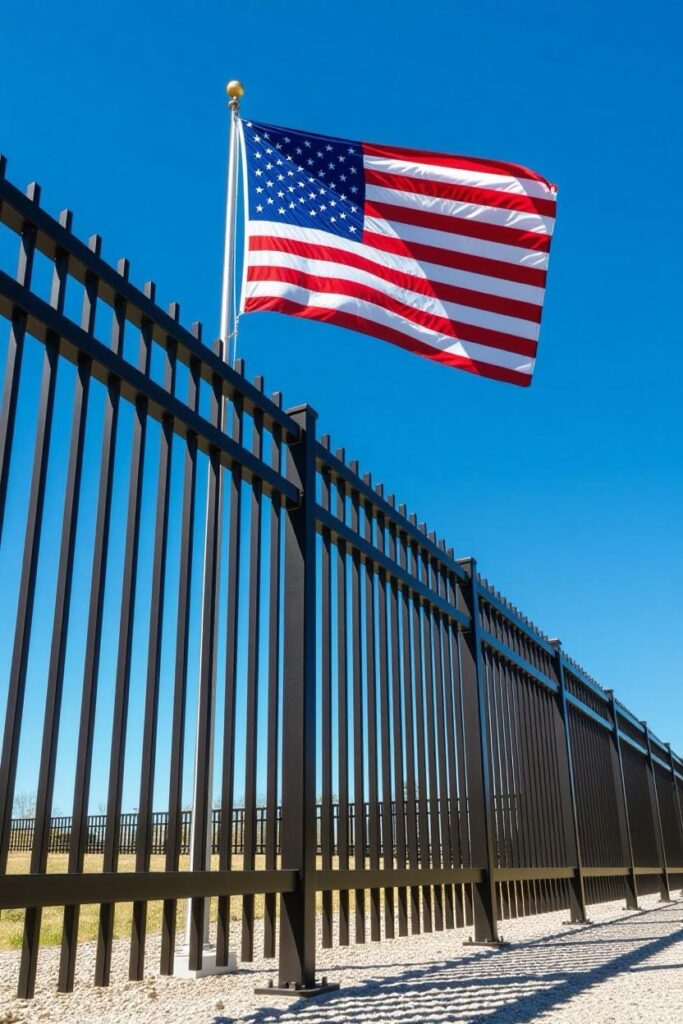Securing a nation’s borders is vital for sovereignty, economic stability, national security, and the rule of law. Robust border control, including physical barriers, surveillance tech like drones and sensors, and immigration enforcement, regulates lawful entry while deterring illegal immigration and transnational threats like drug trafficking, human smuggling, and terrorism. Porous borders undermine state authority, enable cartels, and strain resources, potentially reducing GDP growth. Strong enforcement through agencies, laws, and technologies ensures lawful trade, public safety, and compliance, while international cooperation and policies like the Migrant Protection Protocols balance humanitarian needs. Uncontrolled migration fuels crime and economic disruption, making border security a cornerstone of governance.
Long Version
The Imperative of Border Security: Safeguarding Sovereignty, Economic Stability, National Security, and the Rule of Law Amid Illegal Immigration and Transnational Threats
In an era of global interconnectedness, securing a nation’s borders is not merely a policy choice but a foundational requirement for preserving its core attributes. Border security encompasses measures like physical barriers, surveillance technologies, and immigration enforcement to regulate lawful entry, trade, and movement while deterring unauthorized immigrants, irregular migration, and transnational criminal organizations. As of October 2025, the United States faces escalating challenges from porous borders, including record apprehensions of illegal aliens, drug smuggling, and human trafficking. This article examines how robust border control upholds national sovereignty, bolsters economic prosperity, fortifies homeland security, and reinforces the rule of law, particularly against the backdrop of illegal immigration and transnational threats such as organized crime, terrorism, and illicit narcotics flows.
Upholding National Sovereignty Through Border Enforcement
National sovereignty—the authority of a state to govern itself without external interference—relies fundamentally on territorial sovereignty and the ability to control cross-border flows. Porous borders undermine this by allowing illicit movement, effectively ceding control to non-state actors like cartels and smugglers. In the U.S. context, the southern border has seen surges in unauthorized immigrants, with “known gotaways” evading detection and exacerbating border vulnerability. The 2025-2029 Border Patrol Strategy emphasizes securing the border to prevent such encroachments, aligning with executive actions like the January 2025 order to protect against “unlawful mass migration.”
Physical barriers, fencing, and vehicle barriers, combined with advanced technology such as drones, unmanned aerial vehicles, sensors, infrared night scopes, cameras, radar, and autonomous surveillance towers, form critical enforcement infrastructure. These tools enable thorough vetting and screening methods at ports of entry, ensuring lawful trade while blocking irregular migration. Without them, noncitizens entering without authorization erode sovereignty, as seen in hybrid sovereignties emerging in border spaces where state control diminishes. International cooperation, including bilateral agreements and multilateral efforts like the Global Compact on Migration, can support this, but domestic investment in technology and modernizing ports remains essential. Without secure borders, no country can be truly strong, highlighting how borders define jurisdiction and protect against invasion-like threats.
Fortifying National Security Against Transnational Threats
Homeland security is intrinsically linked to border control, as porous borders facilitate transnational threats including terrorism, terrorist threats, human smuggling, drug trafficking, weapons smuggling, and money laundering. The 2025 Homeland Threat Assessment identifies evolving risks from terrorist watch list individuals and transnational criminal organizations exploiting inadequate screening. In 2025, reports indicate another record-setting month for apprehensions, underscoring how unsecured borders enable the illicit movement of narcotics, contraband, and people.
Transnational criminal organizations, including gangs and violent transnational actors, thrive on border vulnerability, smuggling illicit drugs like fentanyl—enough to cause widespread overdose deaths—and facilitating human trafficking. Operations like Gatekeeper, Safeguard, and Jump Start, along with the National Drug Control Strategy, demonstrate how enforcement infrastructure counters these. Aerial surveillance, underground sensors, and satellites aid in seizing contraband and apprehending criminals, while programs like Trusted Traveler and the Western Hemisphere Travel Initiative ensure lawful entry without compromising security.
The proliferation of small arms and light weapons across porous borders poses direct national security threats, as noted in global analyses. Illegal migrants and alien smugglers often serve as vectors for these risks, with the 9/11 attack serving as a stark reminder of vulnerabilities. Public safety demands expedited screening processes and vetting of migrants, alongside federal-state partnerships and international cooperation to address migrants in vulnerable situations, asylum-seekers, and refugees under principles like non-refoulement and the Refugee Convention. Uncontrolled borders invite trafficking, illegal arms, and potential terrorist infiltration, with millions of apprehensions highlighting the scale.
Ensuring Economic Stability and Prosperity
Economic security hinges on border control to prevent disruptions from illegal immigration and transnational crime. Undocumented people contribute through taxes and spending—estimated at billions in federal, state, and local taxes—but mass unauthorized inflows strain resources, potentially reducing GDP growth by percentage points under low-immigration scenarios. Models project that mass deportation of unauthorized immigrants could decrease tax revenue by removing significant contributors, impacting economic growth.
Conversely, secure borders promote economic prosperity by facilitating lawful trade under agreements like NAFTA and curbing counterfeit goods, racketeering, and illicit materials that undermine markets. Border security funding and immigration enforcement budgets help manage costs, with substantial expenditures on border impacts illustrating the burden of porous borders. Deportations and removal proceedings for criminal aliens reduce strain on public safety and welfare systems, while policies like the Migrant Protection Protocols and categorical parole programs balance humanitarian needs with stability. Unregulated inflows overwhelm healthcare and education, disrupting labor markets and driving down wages. Holistic approaches, including coordination centers and forward operating labs, ensure borders support economic growth rather than hinder it.
Reinforcing the Rule of Law and Immigration Enforcement
The rule of law demands consistent enforcement of immigration laws, preventing visa overstays, fraudulent documents, and catch-and-release policies that encourage irregular migration. Customs and Border Protection, Immigration and Customs Enforcement, and Border Patrol play pivotal roles in detention authority, removal of criminal aliens, and apprehensions of illegal aliens. The 2025 executive orders expanded enforcement mandates to combat invasion-like threats, delegating authority and involving additional officers in enforcement.
Laws like the Illegal Immigration Reform and Immigrant Responsibility Act, Immigration and Nationality Act, Secure Fence Act, and Homeland Security Act provide frameworks for expulsions, returns, and offshore processing. Tools such as mobile apps, DNA fingerprinting under the DNA Fingerprint Act of 2005, and processes for specific nationalities ensure orderly handling of unaccompanied children and noncitizens. Weak enforcement erodes trust, as legal immigrants resent bypassed pathways. A 2025 final rule expanded enforcement capabilities, emphasizing compliance. Immigration enforcement is crucial for maintaining national security, underscoring how firm stances preserve sovereignty and deter chaos.
Interconnections: Illegal Immigration, Transnational Threats, and Comprehensive Solutions
Illegal immigration amplifies transnational threats, with people smuggling often intertwined with drug smuggling and firearms smuggling by transnational criminal organizations. This nexus threatens all pillars: sovereignty through uncontrolled entry, national security via potential weapons of mass destruction or terrorist actors, economic stability by inflating costs, and rule of law through bypassed procedures. Solutions require border security funding, special visas for vetted individuals, and responsibility to protect principles, alongside North American cooperation.
In conclusion, securing borders is a long-term duty essential for a nation’s endurance. By integrating advanced technology, robust policies, and international partnerships, the U.S. can mitigate risks from illegal migrants and transnational crime, ensuring a secure, prosperous future. This balanced approach respects human rights while prioritizing citizens’ well-being, making border security a cornerstone of effective governance.

Hashtags For Social Media
#BorderSecurity #NationalSecurity #IllegalImmigration #SecureBorders #ImmigrationReform #BuildTheWall #NationalSovereignty #EconomicStability #RuleOfLaw #TransnationalThreats #HomelandSecurity #DrugTrafficking #HumanTrafficking #Terrorism #ImmigrationPolicy #BorderWall #PublicSafety #LawAndOrder #AmericaFirst #MigrantCrisis #VisaOverstays #AsylumSeekers #ImmigrationEnforcement #CBP #ICE #BorderPatrol #FentanylCrisis #Patriotism #SecureOurBorders #DHS
Related Questions, Words, Phrases
why secure borders for national sovereignty? | importance of border security in maintaining sovereignty | how does border control protect economic stability? | role of borders in national security and rule of law | why is securing borders essential against illegal immigration? | benefits of strong border enforcement for sovereignty | transnational threats and the need for border security | how border security ensures economic prosperity | impact of porous borders on national sovereignty | why prioritize border control for homeland security? | securing borders to combat drug trafficking and terrorism | economic effects of illegal immigration on stability | rule of law and immigration enforcement at borders | what makes border security crucial for sovereignty? | how do physical barriers enhance national security? | transnational crime: why secure borders matter | border vulnerability and its threat to economic growth | importance of vetting migrants for public safety | how illegal aliens affect rule of law in nations | strategies for border enforcement against smuggling | why invest in surveillance tech for borders? | human trafficking risks from unsecured borders | economic stability through controlled immigration | national sovereignty undermined by irregular migration | border security policies for countering terrorism | how catch-and-release impacts rule of law | benefits of international cooperation on borders | why drones and sensors are key to border control | transnational threats to sovereignty via porous borders | economic costs of uncontrolled migration flows | role of immigration laws in upholding security | why secure southern border for u.s. sovereignty? | how border walls protect against organized crime | importance of asylum policies in border management | national security implications of visa overstays






